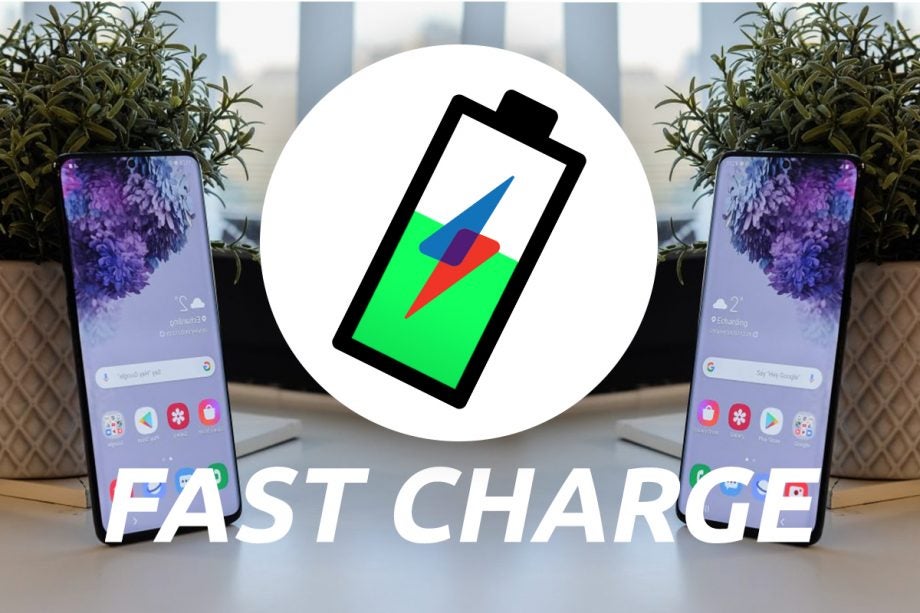Fast Charge: The Galaxy S20 misses the mark in one key way

This week’s tech headlines have been dominated by one thing – the newly launched Samsung Galaxy S20 family of phones.
Don’t get me wrong, there’s a good reason for this. When the Galaxy S20, Galaxy S20 Plus and Galaxy S20 Ultra launched at Samsung’s Unpacked event on Tuesday there was plenty to get excited about.
All the phones feature cool, improved designs, more technical upgrades than you can shake a stick at, and 5G connectivity by default. The three phones will likely become the new benchmark for 2020 flagship phones. However, for me, there was one key thing Samsung got wrong – their screens.
Specifically, as I have many times before, I winced when Samsung’s on stage rep started waxing lyrical about the phone’s triumphant bump to 120Hz refresh rates by default. Being fair to Samsung, there is plenty to like about the jump.
For non-techies’ refresh rate is a metric that tells you how many images per second a display renders. Most phones, until last year, ran at 60Hz refresh rates by default. This meant they would display 60 images per second regardless of what you are doing. A faster 120Hz rate means the Galaxy S20 line of phones can display a much faster 120 images per second.
Though this may not sound like a big deal, it could bring with it a number of nifty bonuses. These include general faster, smoother scrolling and animations, plus minor competitive advantages in reaction based games like MOBAs and shooters. Sound good? It should, and it’s a key reason most gaming monitors come with refresh rates of at least 144Hz these days.
But there’s a trade off when the tech’s used on a mobile device – battery life. Forcing a screen to display more images per second requires a lot of juice and can have a heavy impact on a phone’s stamina if it’s cranked all the time. This is why early OnePlus 7 samples, which had 90Hz refresh rates, struggled to offer two full days juice when they launched.
Samsung’s worked to partially fix this, making it so the Galaxy S20 phones only jump to 120Hz when you set the screen to a less demanding FHD resolution. But Samsung has still completely missed the mark – repeating the same mistake pretty much every phone maker experimenting with high refresh rates has made over the last few years. It should have given the screen a variable, as well as 120Hz, refresh rate.
Related: Best phone 2020
Variable refresh rates lets screens automatically adjust how many images per second they display depending on what the device is doing. This would bring far more advantages than simply having a higher refresh rate.
Outside of gaming and a select few sporting fixtures, most content isn’t actually played, streamed or recorded in 60Hz, let alone 90Hz or 120Hz, so other than an – admittedly nicer – scrolling experience, there aren’t that many benefits to a high refresh rate on phones. You can actually get a more diverse set of advantages lowering it in most cases.
We’ve seen this with the new Apple Watch 5. The Watch has a nifty trick where it can lower its refresh rate from 60Hz to 1Hz when the wearable is just doing a basic task, like showing the time. The ability to drop the refresh rate incrementally improved the Apple Watch’s battery life and is a key factor behind the watch’s always-on screen. I don’t see any reason why phones couldn’t pull the same trick.
The ability to intelligently lower the refresh rate when doing things like streaming video on Netflix to 30Hz has already been shown to offer battery improvements on the Razer Phone 2. So again, why are other companies not letting you do it on 2020’s flagships?
Hopefully Apple, at the very least, will fix this with the new iPhone 12 family of phones, which are tipped to have 120Hz refresh rate screens.
Fast Charge is our weekly mobile-focussed column where we delve deeper into the world of smartphones, wearables and more. Find it on Trusted Reviews every Saturday morning.


